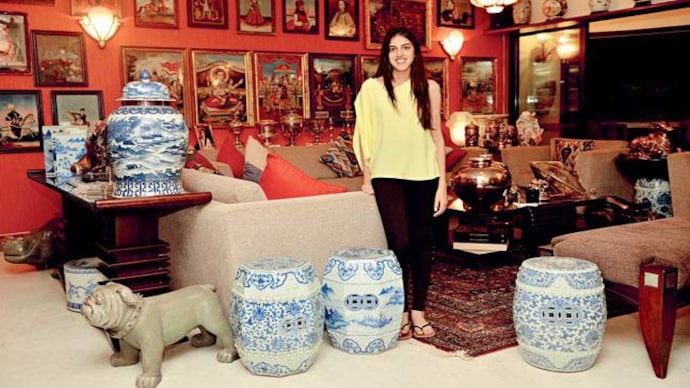This 18-year-old has found a very innovative way to protect Parsi antiques
Zara Heeramanek's Adopt-An-Antique initiative is a significant step for the FD Alpaiwalla Museum, the city's only Parsi museum.

The first time 18-year-old Zara Heeramanek saw the crimson-hued umbrella stand at the Framji Dadabhoy Alpaiwalla Museum, the late 19th century antique was quite literally headless.
"It was so badly damaged; the top portion seemed to have been cut off and kept aside. I thought it would be impossible to restore, but the job has been done," says the 12th grader, a student of BD Somani School. The umbrella stand, one of several hundred antiques at the Alpaiwalla Museum at the Khareghat Colony at Kemps Corner, was the first beneficiary of Heeramanek's Adopt-an-Antique initiative launched in October this year. Managed by the Bombay Parsi Punchayet, the museum set up in the 1950s is a little known, unassuming space burdened with an overwhelmingly large collection donated over the years by members of the Parsi community.

It has been closed to the public for years, but the museum's grand restoration plans, spearheaded by Pheroza Godrej, Firoza Punthakey-Mistree, curator Nivedita Mehta and conservation architect Vikas Dilawari, brought it in the news two years ago. And it was around this time that Heeramanek, who grew up living in Khareghat Colony, first learnt of the museum's existence. "My father knew the people in-charge, so when I went to visit the museum, they showed me stuff they don't really have the funds to showcase and take care of," says the teenager. One of the main problems that the Alpaiwalla Museum faced was that they had a lot of porcelain antiques, especially vases that are in a very bad condition.
This is what Heeramanek hopes to address through her initiative. "Raising funds to reopen the museum was far too big a project for me to take on while still in school. So I decided to start small," says Heeramanek. While Heeramanek's focus is now on eight late 19th century pieces, she's hoping that the museum can carry the initiative forward even after she leaves the city to pursue her graduation in the United States. "The museum seems positive that it is a good scheme to bring it back to life or at least start the process, because it's going to be a long one. I'm happy that I started it on the road to recovery," she says.
